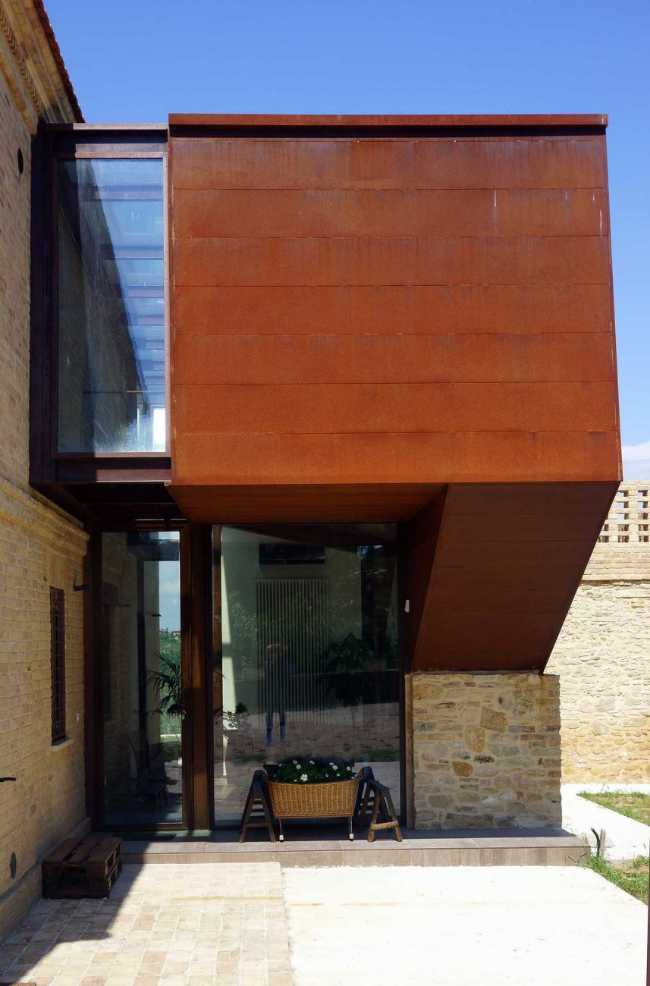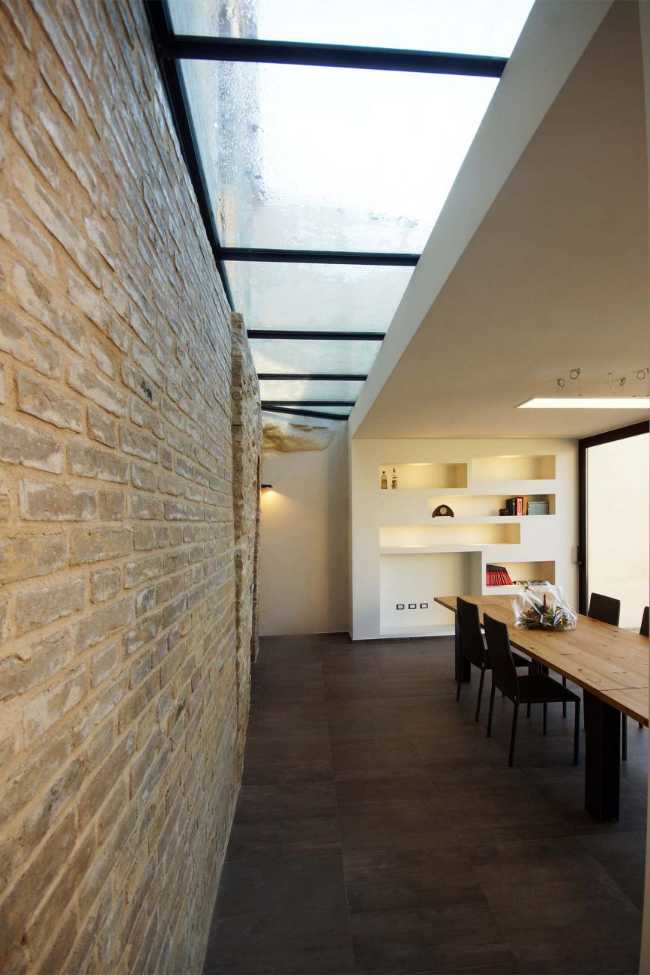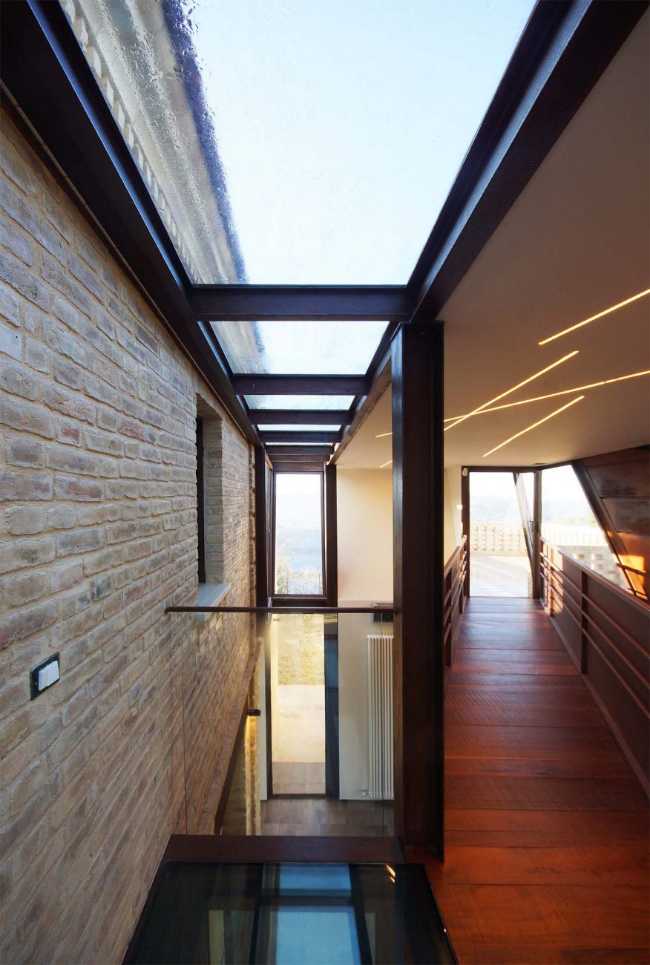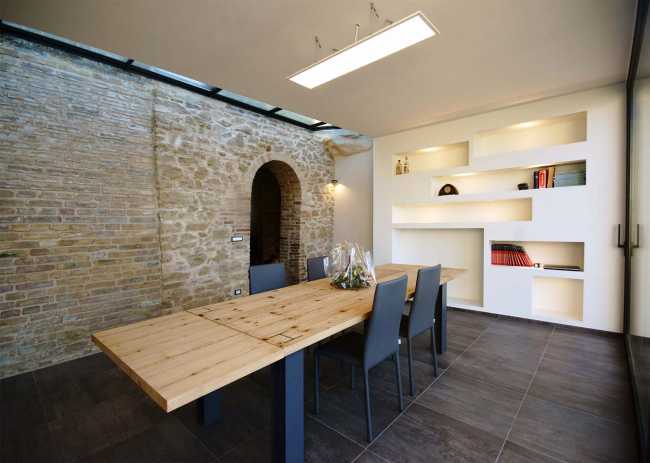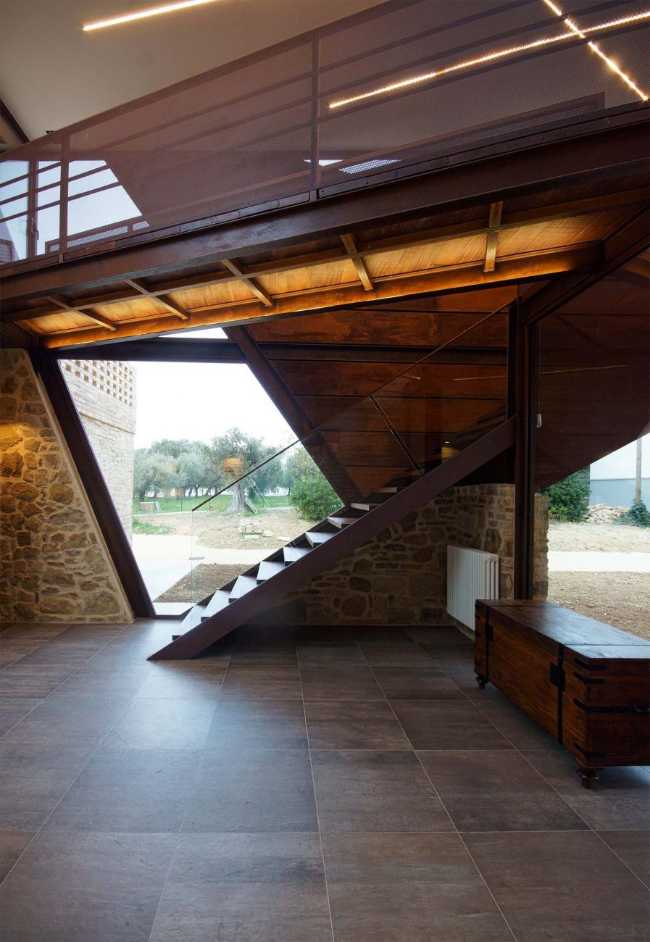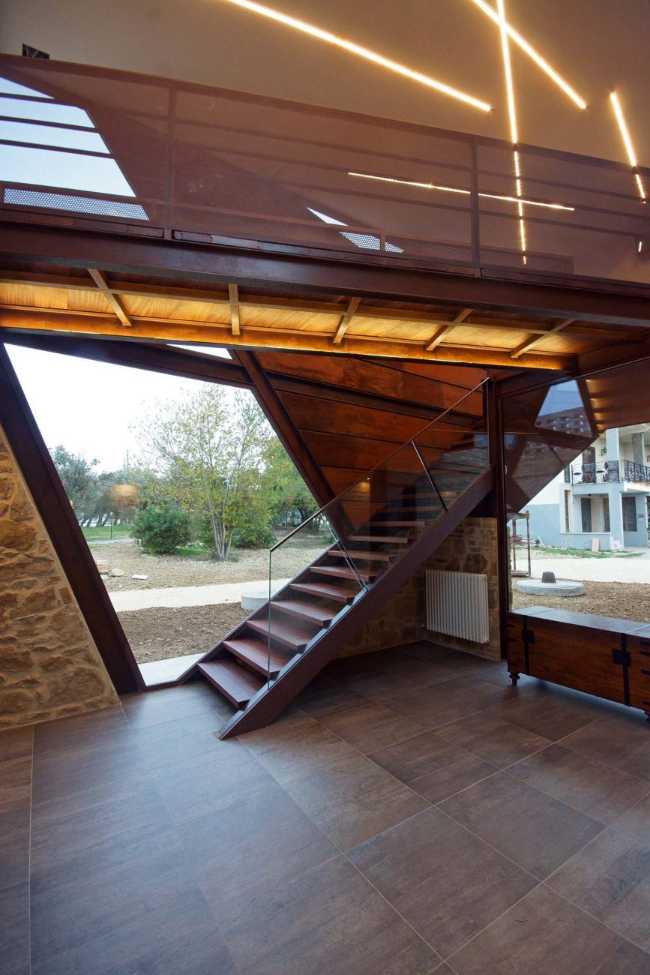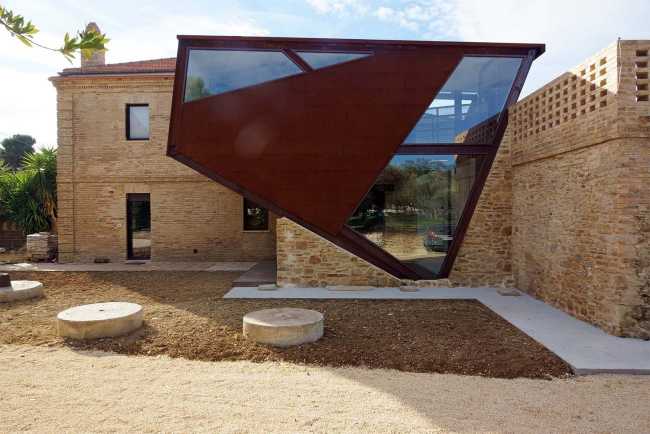Intervention aimed at the recovery of a late nineteenth-century building. The premises were intended partly for residential use and partly for an oil mill

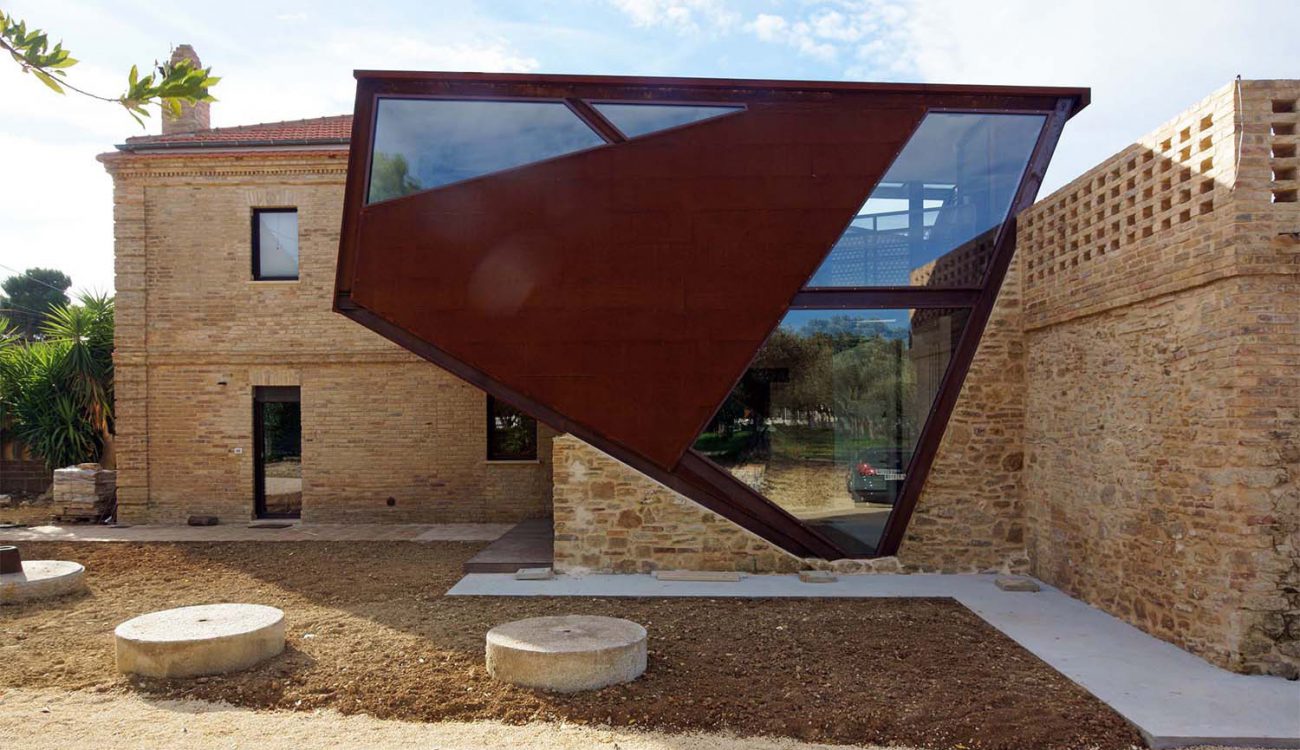
Residential redevelopment in Abruzzo. Modern language for the late 1800s building.
The Architect Rocco Valentini carries out a building intervention aimed at the recovery of a late nineteenth-century building in Chieti, Abruzzo. The new structure is characterized by the use of a modern architectural language.
- #Europe
- #Italy
- #Historical Building
- #Housing
- #Metal
- #Glass
- #Building extension
- #Renovation
- #Architectures

During the 1980s, various factory buildings were added which effectively incorporated the original structures, depriving them of light and air
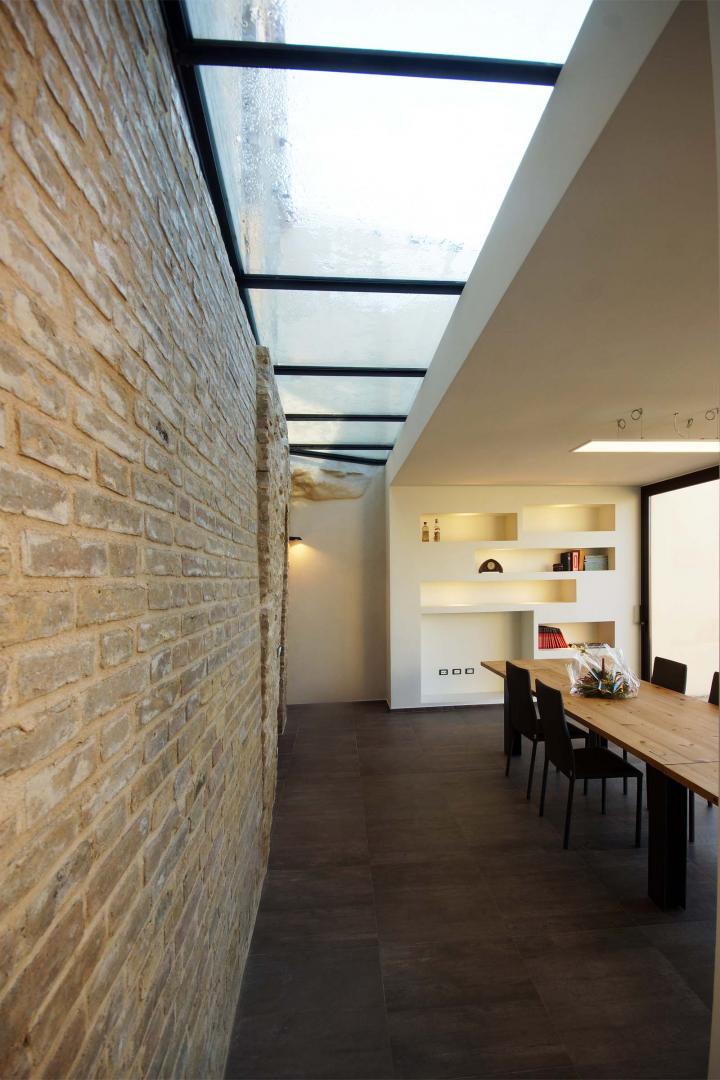
The purpose of the intervention was to bring new life to the house by demolishing the structures added in the eighties. The two original building bodies were connected through the insertion of a new volume, a hinge space, with functions of entrance, hallway, and vertical connection.
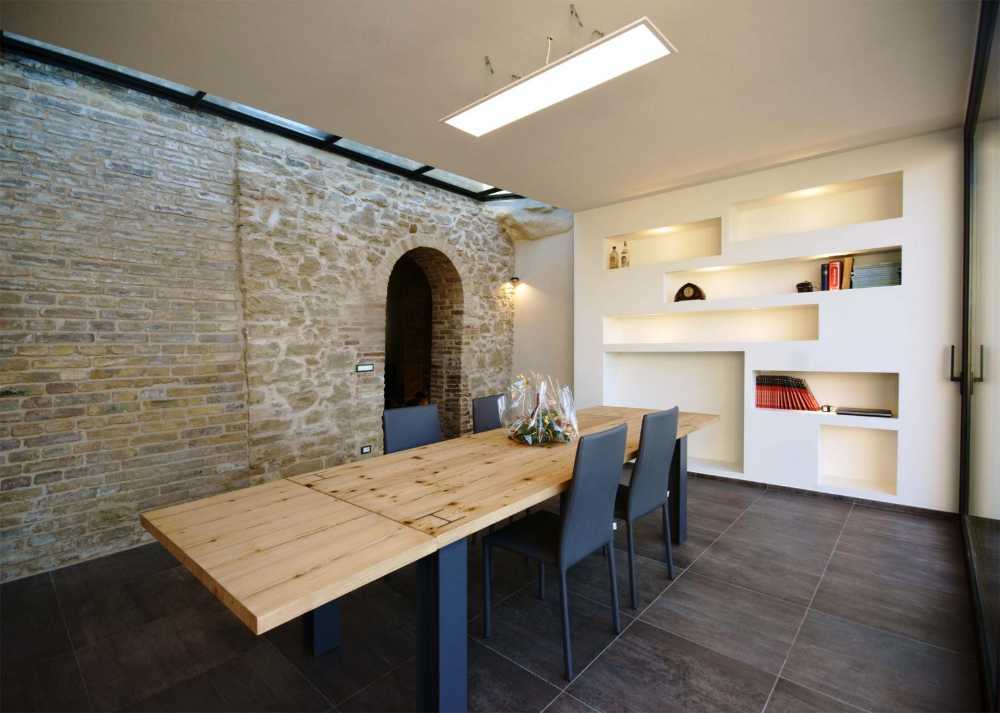
The linking structure has been made of Corten steel and glass, inspired by the shapes of some machines used for processing agricultural products at the beginning of the last century, specifically an old thresher, a machine that separates wheat from straw. It introduces a dynamic element to the late nineteenth-century country house, which may appear alien in form to the historical architectural context, but evokes the ancient rural landscape of Abruzzo, harmonized in colors.
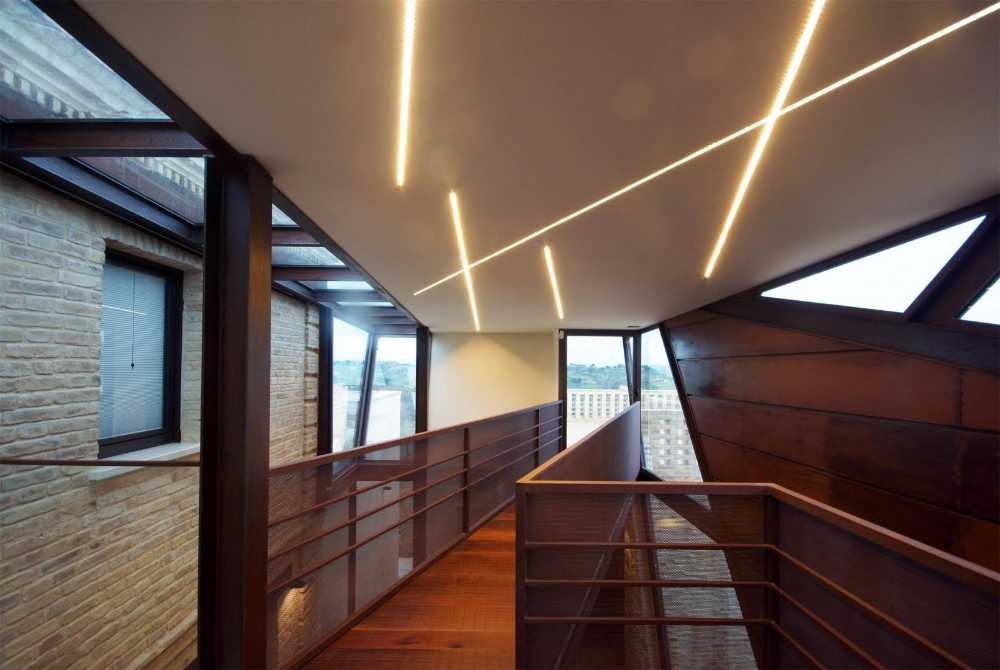
The new volume, dining room, added on the west side, uses a modern architectural language, clearly differentiating itself from the 19th-century structure. The light cuts at the top separate the old structures from the contemporary ones. The color tones of the materials used inside harmonize with that of corten steel: dark brown stoneware for the floors and mahogany wood for the staircase and walkway
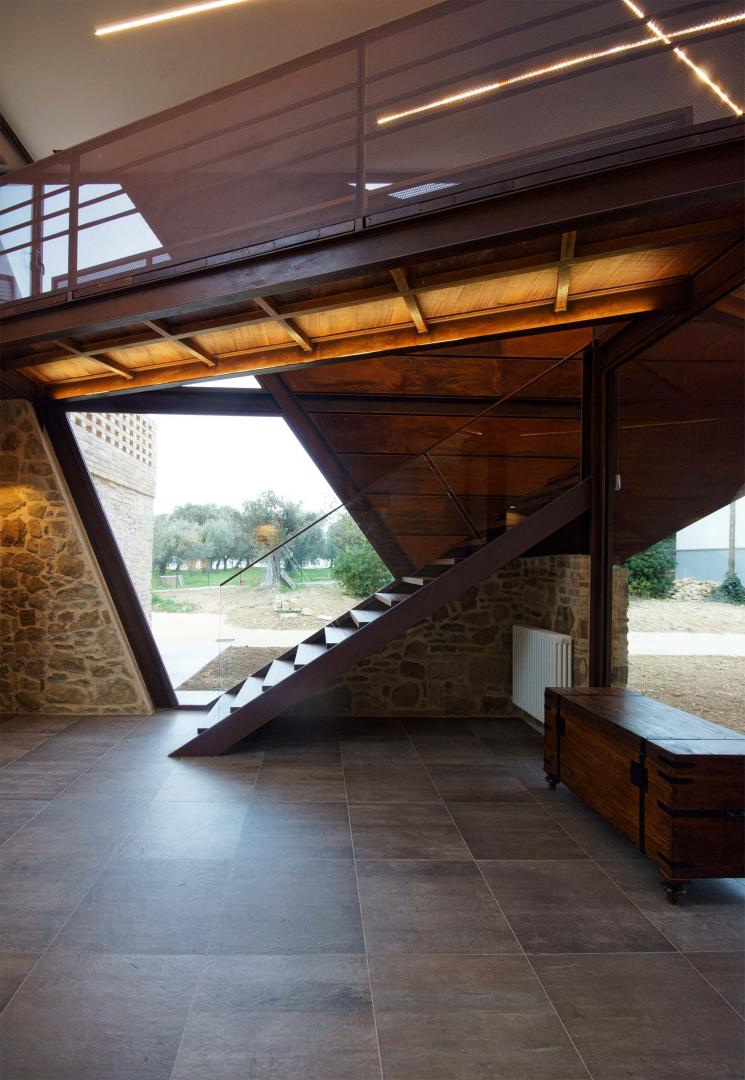
The lighting system, using warm white LED fixtures (3000 ° K), enhances the colors of the materials used. The brick vaults of the ancient spaces, to highlight the agricultural origin of the house, have been left visible. Entering the steel and glass box is like passing through a portal of time, which, through colors and materials, foreshadows the ancient buildings it connects.
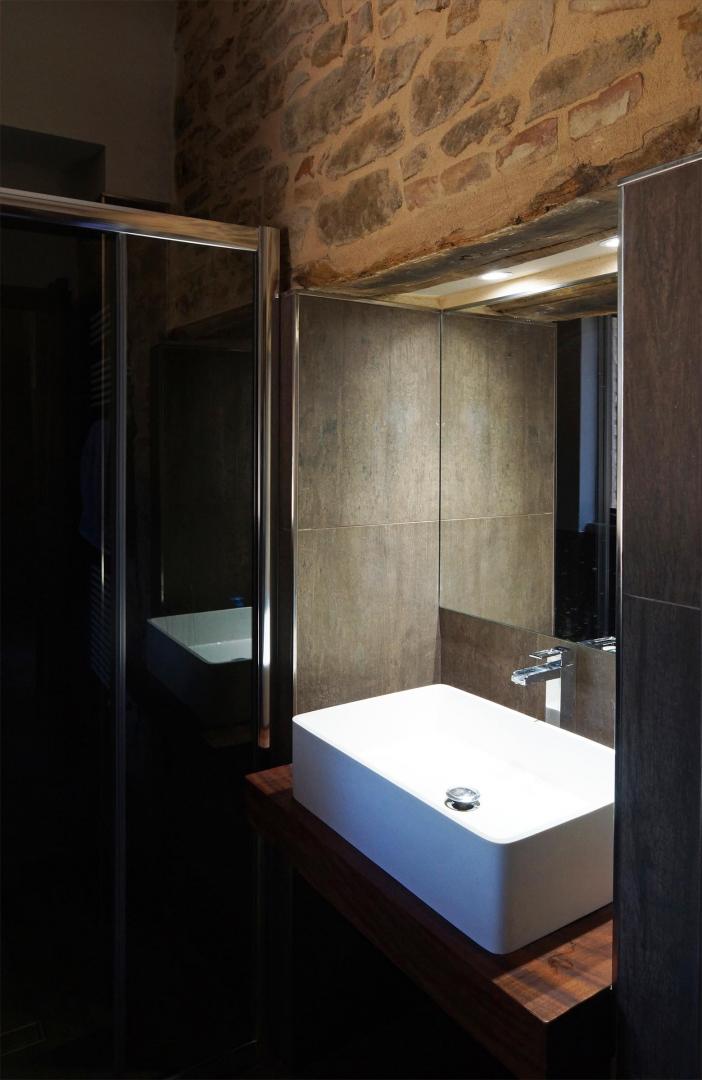
Gallery

